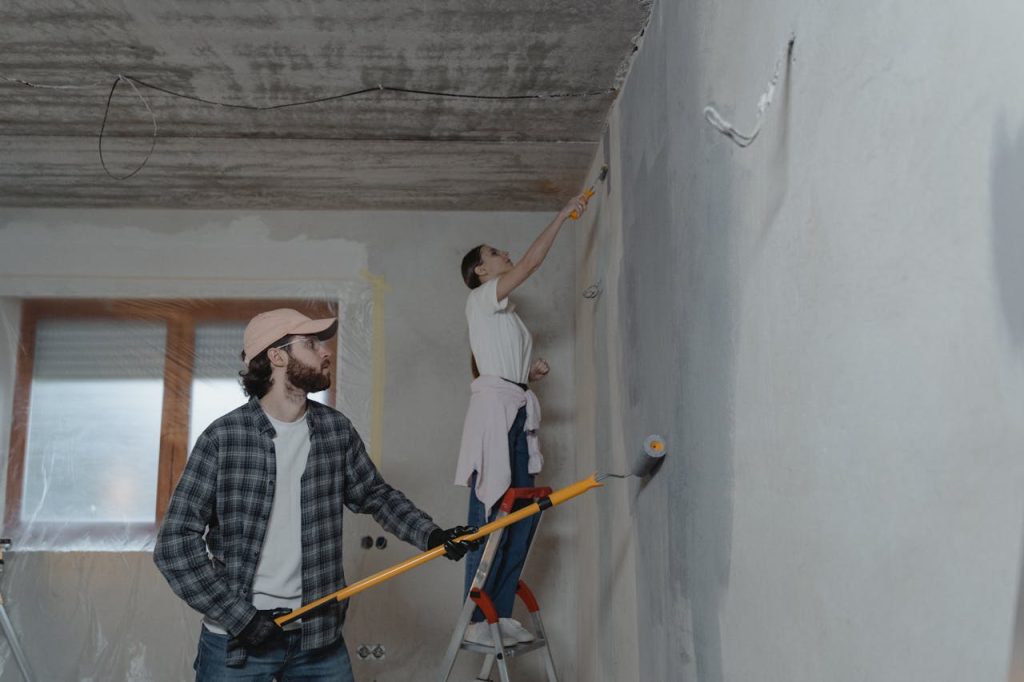Key Factors Influencing Home Renovation Costs
When renovating a home in California, knowing what drives the price is crucial. If you're planning a big overhaul or just sprucing up a room or two, understand the key cost factors. This approach allows you to plan effectively and steer clear of unexpected costs.
Geography and Housing Market Trends
Location, location, location. It’s not just a real estate mantra. It drives renovation prices. Coastal regions like Los Angeles or the Bay Area tend to have higher labor and material costs than inland areas like Fresno or Bakersfield. High demand for skilled workers in urban centers can push up prices, while rural spots might offer a more affordable edge.
Scope of Work
Are you planning a full-scale makeover or focusing on specific areas like the kitchen or bathroom? The scale of your project heavily influences costs. Targeted upgrades are often cheaper. But, they can add value if done well.
Size of the Property
Bigger spaces equal bigger bills. On average, renovations in California cost $150 to $500 per square foot, depending on materials, labor, and complexity. For instance, a 2,000-square-foot home will naturally cost more to overhaul than a cozy 800-square-foot cottage.
Breakdown of Common Renovation Costs
From kitchen remodels to bathroom upgrades, each project comes with its price range and surprises. Let’s explore the typical expenses for common renovations so you can get a realistic sense of what to expect. Spoiler alert: it’s not all about granite countertops and designer tiles!
Kitchen and Bathroom Remodel Costs
Kitchens and bathrooms often top the list for home improvements, and for good reason—they’re the spaces buyers notice most. A kitchen remodel in California can range from $20,000 for basic updates to over $75,000 for a luxury revamp. Bathroom upgrades typically start around $10,000 and climb to $50,000 for high-end designs.
Cost of Adding an ADU in California
Accessory dwelling units (ADUs) are popular. California's housing laws encourage them. They allow for more living spaces. Building an ADU typically costs $100,000 to $300,000, factoring in permits, materials, and labor. Legal rules, like setback and parking rules, can affect the bill.
Labor Costs for Home Remodeling
Labor costs are a significant slice of the pie, often consuming 40% to 60% of the renovation budget. In high-demand areas like San Francisco, contractors can charge $150 or more per hour. This is especially true for specialized trades like plumbing and electrical work.
Hidden Costs of Home Renovation
Surprises aren’t always good—especially when they involve your budget. Unexpected costs, like asbestos removal or mold cleanup, can add thousands to your bill. So can rewiring old electrical systems. Don’t forget about post-renovation cleaning and debris disposal, which can also pile on extra costs.

Essential Expenses
Renovation costs in California don’t stop at materials and labor—there are essential expenses that can sneak up on you if you’re not prepared. Knowing what to expect and planning for these expenses can save you from budget surprises down the road.
Permits and Inspection Fees in California
Building permits aren’t optional, and their costs can range from $500 to $5,000 depending on the project. Inspections are a must. They help guarantee your project complies with California's rigorous building regulations. Overlooking these steps might result in fines or project delays.
Material Costs
From bamboo flooring to granite countertops, materials can make or break your budget. The cost of raw materials often varies based on changes in supply and demand. Hence, it's worth sourcing locally to cut transportation costs.
Budget Planning
Planning your renovation budget is like building the foundation of your project—get it right, and everything else has a solid base. Without a clear plan, costs can spiral faster than you can say “over budget.” Let’s break down how to create a practical budget that covers all the bases while keeping your financial sanity intact.
Creating a Renovation Budget
A solid plan is your best friend in avoiding financial headaches. Here’s a quick breakdown:
- • Minor upgrades: $10,000–$50,000
- • Extensive remodel: $50,000–$150,000
- • Luxury projects: $300,000+
Setting aside 10% to 20% of your budget for unforeseen expenses is a prudent strategy.
Return on Investment (ROI) for Renovations
Focusing on the right projects for your specific market can make all the difference when it comes time to sell. It's important to consider not just the upfront costs but also how much value those upgrades will add to your home. Here’s a quick breakdown:
- • Popular Renovations with Strong ROI:
- - Kitchen Remodels: Often the star of the show, these upgrades typically recoup about 70% of their cost. A modern, functional kitchen appeals to almost every buyer.
- - Bathroom Remodels: These improvements usually yield a 60-70% return. This is especially true for updates to fixtures and efficient layouts.
- - Curb Appeal Enhancements: Landscaping, fresh paint, and upgraded entryways can yield a 100% return. They create a great first impression.
- • How California’s Market Influences ROI:
- - In hot real estate markets like Los Angeles or San Francisco, even modest renovations can significantly boost resale values due to high demand.
- - Buyers may pay a premium for high-end finishes in coastal and sought-after neighborhoods. So, luxury upgrades may yield a better return on those properties.
- - In slower markets, simpler renovations may yield better returns than high-end remodels.
Common Pitfalls
Even with the best plans, renovations can sometimes go sideways. And let’s be honest, surprises in renovations are rarely the good kind. Anticipating common pitfalls in advance can help you avoid headaches, delays, and overspending. Here’s what to watch out for so you can keep your project on track and your stress levels in check.
Underestimating Remodeling Expenses
It’s tempting to skimp on budget planning, but underestimating costs can derail your project. Always get multiple quotes and factor in hidden expenses to avoid nasty surprises.
Dealing with Delays
Labor shortages, zoning issues, and material backorders are common in California. Preparing for potential delays can help you avoid unnecessary stress.
Final Tips
Let’s be real—renovating a house can feel like balancing on a tightrope while juggling flaming torches (ok, maybe that was a bit too dramatic.) But with a little strategy, you can save money, reduce stress, and still end up with results that wow. Ready to wrap up your project? Let’s dive in.
Money-saving Strategies for Renovations:
- • Source Materials Locally: Skip the hefty shipping fees by buying materials from nearby suppliers or reuse stores. It’s wallet-friendly and eco-conscious!
- • Time Your Project Right: Renovating in off-peak seasons can help you get better deals from contractors and suppliers. Consider tackling your renovation during the winter instead of the usual summer rush.
- • DIY Where You Can: While some tasks need the pros (we’re looking at you, electrical wiring), simple jobs like painting or landscaping can save you a bundle.
- • Reuse and Recycle: Refurbishing salvageable items, like cabinets and fixtures, can save money. It won't hurt the style.
- • Work with Efficient Contractors: Experienced pros may charge more. But, their speed cuts costs.
Skip the Reno? Consider Selling As-Is
- • Save Time and Effort: Avoid the lengthy renovation process by selling your house in its current condition.
- • Attract Cash Buyers: Buyers like John Buys Bay Area Houses buy properties as-is. They offer a quick, stress-free alternative.
- • Reduce Risks: Say goodbye to renovation hiccups and unpredictable costs. Selling as-is means you can move forward without the hassle.
From Blueprint to Reality: Smart Steps for California Home Makeovers
Renovating a house in California is an investment in both comfort and value. With the right planning, clear budgeting, and a sprinkle of patience, you can achieve the transformation you envision. If renovations seem more exhausting than exciting, consider selling your property as-is. It might be simpler. For a quick, straightforward solution, reach out to John Buys Bay Area Houses—they’re ready to help you take the next step.
FAQs about the Cost to Renovate a House in California
What is the average cost per square foot for renovations in California?
The cost typically ranges from $150 to $500 per square foot, depending on the project’s scope and location.
How much do permits and inspection fees cost in California?
Expect to pay between $500 and $5,000, depending on the size and complexity of the renovation.
How much does it typically cost to build an ADU in California?
Building an ADU usually costs between $100,000 and $300,000, depending on materials, labor, and local regulations.
Are there hidden costs to be aware of during a renovation?
Yes, unexpected costs, like asbestos removal, can add thousands to your renovation budget.
Should I sell my house in California as-is instead of renovating it?
If renovations feel too hard or take too long, sell your house as-is. It's a simple, stress-free solution. John Buys Bay Area Houses specializes in making this process seamless.



